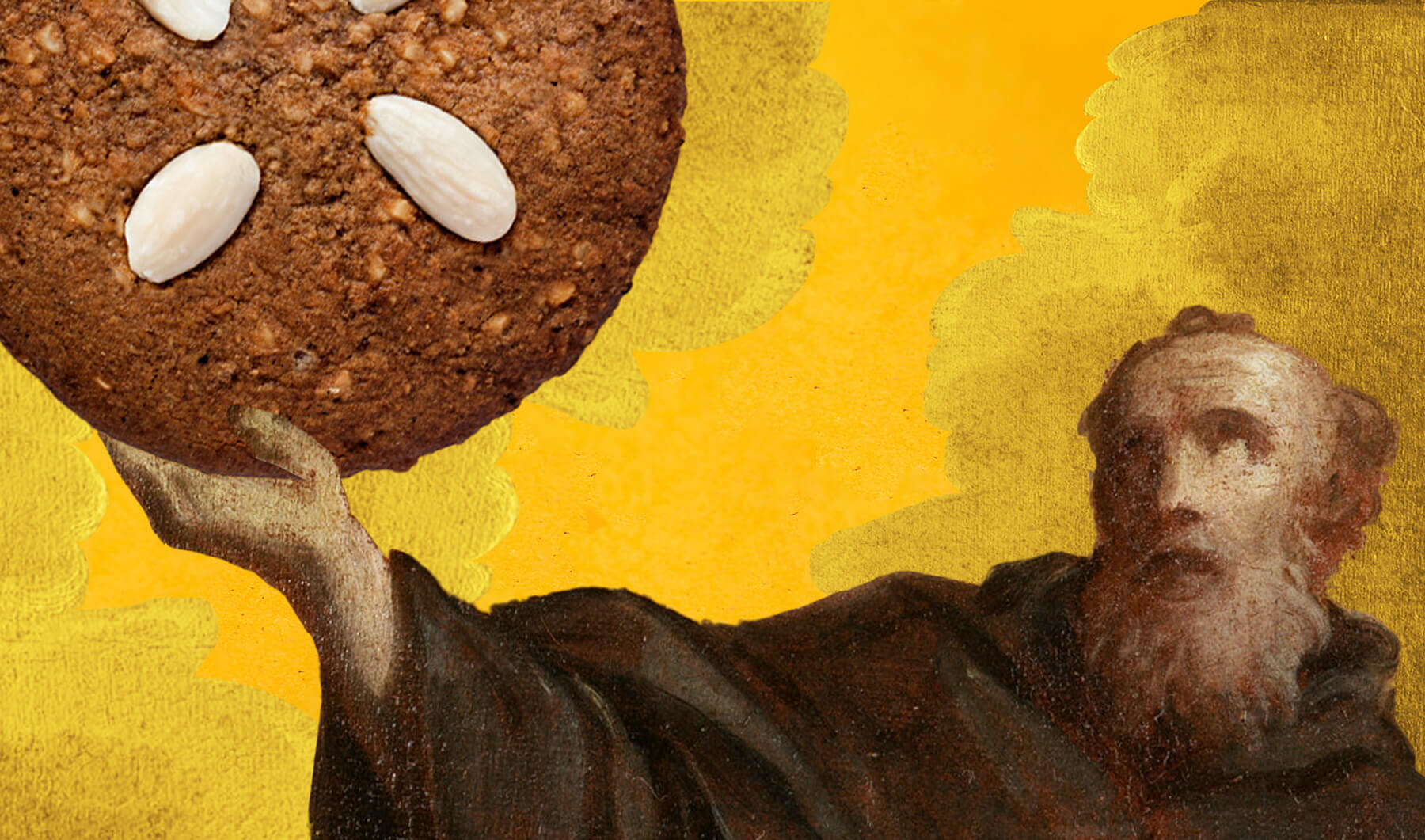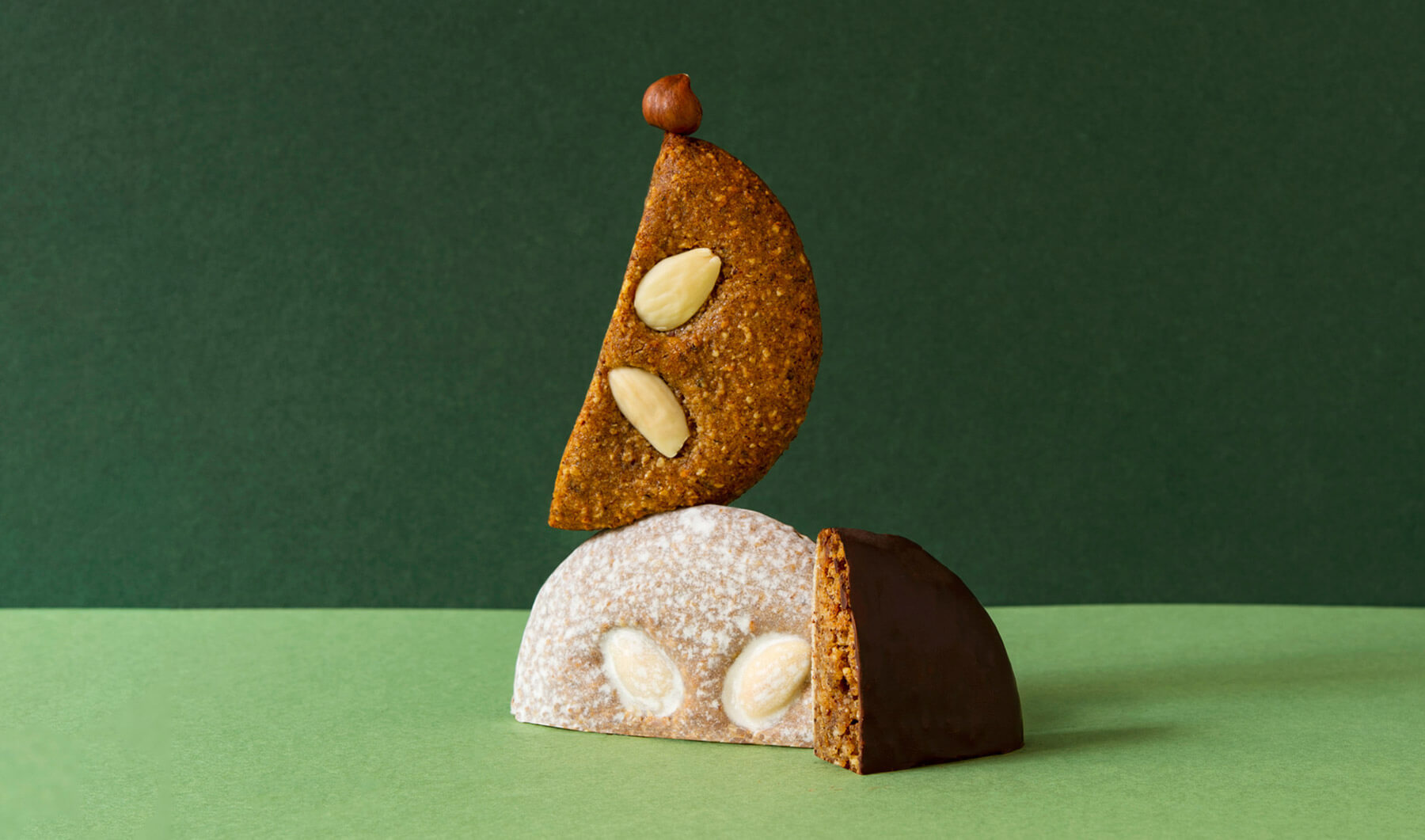The history of Lebkuchen

We all know it, whether classically on a wafer, as a heart for loved ones or assembled as a colorfully decorated house - the Lebkuchen. But where does it actually come from?
The oldest sweet pastry of mankind
The history of Lebkuchen goes back as far as ancient Egypt. Wall paintings and stone reliefs provide the first evidence of honey cakes, which at that time were sweetened with dates or figs, for example. The oldest Lebkuchen find is dated to 2200 BC and comes from an Egyptian rock tomb. This means that Lebkuchen has been around almost as long as the pyramids themselves!
There is also evidence from ancient Greece of sweet cakes made of flour and honey, which were considered a feast and served as offerings. Via the Romans, the honey cake finally came into circulation as a commodity and thus also found its way to provinces north of the Alps. The idea of adding exotic spices to the pastry probably originated in Belgium.
Monastery superfood
From the early Middle Ages to the 12th century, Lebkuchen (also called honey tents) was found mainly in monasteries and monastery pharmacies. Monks and nuns knew about the "superpowers" of the Lebkuchen ingredients which made the sweet pastry more of a medicine that was used, for example, to treat stomach ailments. Furthermore, Lebkuchen was sold to pilgrims as food for the road or as a souvenir.
Lebkuchen maker as a profession
In the course of progressive specialization in crafts and trades in the 13th century, the new occupational group of Lebkuchen makers or honey cake bakers emerged in southern Germany, Austria and Hungary.
Association of Lebkuchen makers into separate guilds
The earliest documented references to so-called Lebzelter from Nuremberg date back to 1395, although the city is now considered a Lebkuchen metropolis. In the middle of the 17th century, a 100-year dispute broke out between Lebzelters and bakers, as the latter, fearing that they would no longer be allowed to produce Lebkuchen themselves, did not want to tolerate the secession of the so-called Lebküchner as an independent guild. Nevertheless, the conflict finally ended with the final separation of the two groups.
Honey vs. sugar
For many centuries and millennia, honey was the sweetener of choice. Cane sugar, from India or Persia, for example, was considered "white gold" and was only available to the rich class of the population. With the discovery of sugar extraction from beet juice, however, this changed and sugar gradually became available to the common people as well. This meant that not only honey, but also the strict guild regulations and the Lebzelter's monopoly on sweet pastries were history. Thus, for the first time, the Lebzelter got competition from confectioners and confectioners. This whole development took place over the period from 1700 to 1850.
The Nuremberg Lebkuchen War
The so-called Nuremberg Lebkuchen War (yes, that's its real name) between confectioners and Lebkuchen makers arose when Nuremberg became part of the Kingdom of Bavaria in 1806. It had to be settled by the king at the time, who decreed that from now on both professions could produce and sell Lebkuchen. From this point on, the previously rigid boundaries between Lebkuchen makers and confectioners softened throughout Bavaria. At that time, the Lebkuchen did not have it easy, because the competition from other sweets, cakes and pies was enormous and so he was pushed bit by bit into the background.
New Lebkuchen boom thanks to chocolate coating
Thanks to new methods of coating Lebkuchen with chocolate, the pastry experienced a second springtime and enjoyed new popularity at the turn of the century. Not only did the chocolate enhance the taste, but the dark coating also protected it from drying out and preserved the aroma of the spices it contained. Find out here how long your favorite Lebkuchen can be kept today.
Nuremberg wafer Lebkuchen
In the mid-1950s, not only was the term Lebzelter removed from the craft code and replaced by the profession of confectioner, but honey cakes also all but disappeared from the shelves. The new favorite was the wafer gingerbread known as Nürnberger Lebkuchen. In contrast to the brown, flour-heavy honey cake dough, this one convinced with a spreadable mass, which was characterized by a high nut content and a generally high quality of the ingredients. A juicy treat whose taste still delights today.
The Lebkuchen tin
One point that hasn't even come up yet is the origin of the Lebkuchen tin. Richly decorated tin cans filled with Lebkuchen have been around since the second half of the 19th century and made it possible to ship Lebkuchen in a durable way. Even today, the Lebkuchen tin is a popular gift at Advent and Christmas time. We would like to continue this tradition and have given the classic Lebkuchen tin a modern face and also pack its juicy contents in compostable organic foil.



